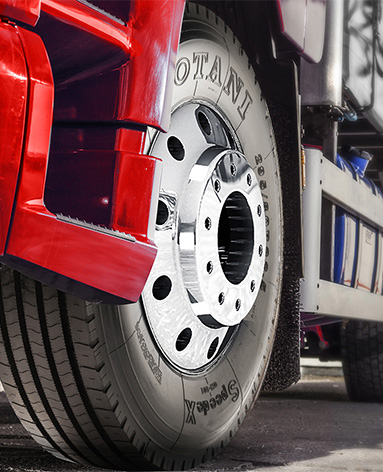Dec . 14, 2024 10:46 Back to list
Guide to Measuring Brake Drum Size Accurately for Your Vehicle
How to Determine Brake Drum Size
When maintaining or upgrading your vehicle's braking system, understanding the correct brake drum size is crucial for safety and performance. Brake drums are integral components of drum brake systems, which are commonly found in many cars, trucks, and trailers. This article will guide you through the process of determining the proper brake drum size for your vehicle.
Importance of the Correct Brake Drum Size
Selecting the wrong brake drum size can lead to several critical issues, including inefficient braking, increased wear and tear on brake components, and potential safety hazards. Having the right size ensures optimal contact between the brake shoes and the drum, resulting in improved stopping power and reduced wear.
Step-by-Step Guide to Measure Brake Drum Size
1. Gather Necessary Tools Before beginning the measurement process, gather the following tools - A tape measure or caliper - A jack and jack stands (if necessary) - A brake drum puller (if the drum is stuck)
2. Safety First If you need to lift your vehicle, ensure it is securely parked on a flat surface. Use wheel chocks to prevent any movement, and engage the parking brake. If you’re working under the vehicle, make sure to use jack stands to support it safely.
3. Remove the Wheel To access the brake drum, you will need to remove the wheel. Use a lug wrench to loosen the lug nuts, then lift the vehicle with a jack and remove the wheel. Once the wheel is off, you’ll have access to the brake drum.
how to determine brake drum size

4. Measure the Outside Diameter Using a tape measure or caliper, measure the outside diameter of the brake drum. Place the measuring tool across the widest part of the drum to get an accurate measurement. Brake drums are typically available in standard sizes; common measurements are 9, 10, 11, and 12 inches.
5. Measure the Inside Diameter If you need to know the exact internal measurements (for example, when replacing the brake shoes), you might also measure the inside diameter of the drum. This measurement is crucial if you are replacing worn-out drums or shoes since the new parts need to match for proper fit and function.
6. Inspect the Drum Thickness It’s also important to check the thickness of the drum. Brake drums can wear down over time, affecting their performance. Use a micrometer or calipers to measure the drum’s wall thickness. The manufacturer’s specifications will indicate the minimum thickness required for safe operation.
7. Look for Model Specifications In addition to taking measurements, refer to your vehicle's owner manual or service manual. This documentation usually provides the specifications for brake drum size, including any part numbers or recommended replacements.
8. Consider Upgrades If you’re upgrading your brakes for better performance or towing capacity, you might want to consider larger drums. However, it’s essential to ensure that any modifications are compliant with your vehicle's design and safety standards.
Conclusion
Determining the correct brake drum size is a straightforward but essential part of vehicle maintenance. By following the steps outlined above, you can measure your existing drums and ensure you purchase the correct replacements. This proactive approach not only enhances the braking performance of your vehicle but also contributes to your safety on the road. If in doubt, consulting with a professional mechanic can further assist in ensuring proper measurements and selections for your braking system. Taking the time to understand your vehicle's brake components will yield dividends in both performance and safety.
-
Liza Brake Drum: Superior Quality & Performance for Safe Driving
NewsAug.24,2025
-
Iveco Brake Drum | Premium OE Quality for Daily & Eurocargo
NewsAug.22,2025
-
Your Brake Drum Man: Quality & Performance Parts
NewsAug.21,2025
-
Explore Japan: Ultimate Travel Guide & Authentic Experiences
NewsAug.19,2025
-
Your Brake Drum Man: Premium & Reliable Brake Drums for Sale
NewsAug.18,2025
-
ROR Web Development: Build Fast, Scalable, Secure Apps
NewsAug.17,2025
